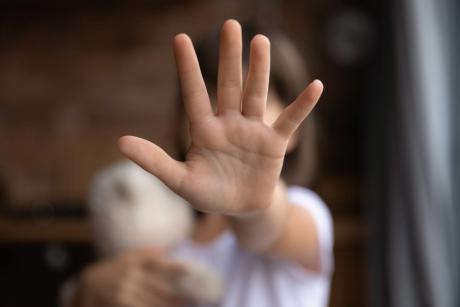All children deserve to grow up in a safe and caring environment, but many do not have the opportunity to do so. The harsh reality is that sexual exploitation and abuse is a serious risk for many children around the world.
The European Day on the Protection of Children against Sexual Exploitation and Sexual Abuse marked on 18 November is an annual initiative of the Council of Europe to raise awareness of and facilitate open discussion on the prevention of child sexual exploitation and abuse, and the protection of children from these crimes.
What do you need to know about the sexual exploitation and abuse of children?
Child sexual exploitation and abuse are complex problems that know no borders and affect the lives of a great number of children. Many children do not talk about the abuse they suffer, making the assessment of the true scale of the phenomenon difficult, thus the number of known cases is often only the tip of the iceberg. UNICEF estimates that child sexual abuse and exploitation is rife in every country of the world, and that one in eight children globally have been sexually abused or exploited at some point in their lives. In Europe, one in five children are estimated to have been victims of some form of sexual violence and between 70 and 85% of child victims know their abuser. A third of abused children never tell anyone about the abuse.
With the rapid digitalisation of our societies, child sexual abuse and exploitation is increasingly happening online. The National Center for Missing and Exploited Children, a United States-based non-profit organisation, has recorded a dramatic increase in reports of online sexual exploitation of children over the past decade.
The number of reports worldwide increased from 1 million in 2010 to more than 21.7 million in 2020, and jumped to a record high of 29.3 million in 2021, involving almost 85 million images and videos. Europe, where over 60% of such material was hosted in 2021, remains the global hub of child sexual abuse material (CSAM). During the COVID19 pandemic, Europol observed a surge in the amount of CSAM shared online, already at high levels even before then, which shines a light on the need to promote prevention and education initiatives across Europe.
About the European Day on the Protection of Children
The European Day on the Protection of Children aims to raise public awareness of the sexual exploitation and sexual abuse of children and the need to prevent such acts. It facilitates an open discussion on the protection of children from sexual exploitation and abuse and helps to prevent and eliminate the stigmatisation of victims. It promotes the ratification and implementation of the Lanzarote Convention, a unique, legally binding instrument that obliges states to criminalise all forms of child sexual abuse and spells out the ways to fight it.
The European Day on the Protection of Children is for everyone who interacts with children in their personal or professional capacity, or who simply takes an interest in the issue. Children and parents, public authorities, professionals working with children, but also other non-governmental organisations and the private sector are all specifically affected.
The European Day is essentially organised in a decentralised way, so participants can decide for themselves what initiatives they want to take. For example, there can be public debates and seminars, discussions in schools, or screening of films on the topic of sexual violence against children, but the possibilities are virtually unlimited.
One of the most effective ways to fight child sexual exploitation is through education. It is highly important to provide children with age-appropriate education and information on the topic, especially about personal boundaries, consent and online safety.
Protecting children from sexual exploitation and violence requires a joint effort from practically everyone. The European Day on the Protection of Children encourages open dialogue in communities, breaking the silence on these issues. By creating a culture of attentiveness, responsibility and support, communities can build a protective shield around the children.
